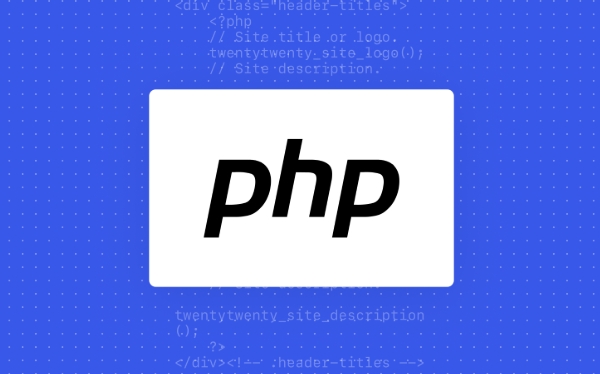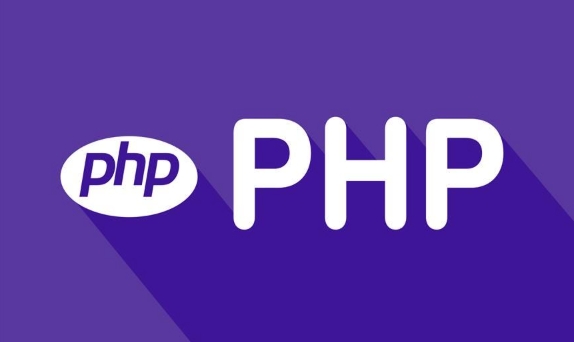“人大代表齐发力 脱贫攻坚显身手”专项行动启动
To reliably convert JSON and serialized strings into PHP arrays, you need to use the json_decode() and unserialize() functions and perform effective verification. 1. Use json_decode($jsonString, true) to convert JSON into an associative array and check for errors through json_last_error(); 2. Use unserialize() to restore PHP serialized strings, note that the return value of false may be confused with the original boolean false; 3. Always verify the input, and you can use is_json() and is_serialized() functions to judge the data format; 4. After conversion, the data should be filtered and cleaned to ensure integrity; 5. Avoid mixed formats during storage, and priority is given to JSON to ensure portability; 6. JSON is suitable for cross-platform data exchange, while serialization is suitable for saving PHP specific object structures. Proper handling of these steps ensures that data conversion is safe, stable and easy to maintain.

Working with data in PHP often means converting between different formats—especially JSON and serialized strings—into native PHP arrays for easier manipulation. Whether you're pulling data from an API, reading from a database, or handling user input, knowing how to reliably convert JSON and serialized data into PHP arrays is essential. Here's how to do it seamlessly.

Converting JSON to PHP Arrays
JSON (JavaScript Object Notation) is widely used for data exchange. PHP provides a built-in function, json_decode() , to parse JSON strings into PHP variables.
To convert JSON into an associated array:

$jsonString = '{"name": "John", "age": 30, "city": "New York"}';
$array = json_decode($jsonString, true);
// Check for errors
if (json_last_error() === JSON_ERROR_NONE) {
print_r($array);
} else {
echo "JSON decode error: " . json_last_error_msg();
}Key points:
- The second parameter
truetellsjson_decode()to return an associated array instead of an object. - Always validate the result using
json_last_error()to catch malformed JSON.
Common JSON-to-array scenarios:

- API responses (eg, from cURL or file_get_contents)
- Reading from
.jsonconfiguration files - Processing AJAX POST data
Handling Serialized Data in PHP
PHP's serialize() function stores complex data types (like arrays or objects) as strings, commonly used in databases or sessions. To reverse this, use unserialize() .
Example:
$serialized = 'a:3:{i:0;s:4:"apple";i:1;s:5:"banana";i:2;s:6:"cherry";}';
$array = unserialize($serialized);
if ($array !== false || $serialized === 'b:0;') { // Handle edge case for false vs boolean false
print_r($array);
} else {
echo "Userialize failed. Invalid serialized data.";
}Important considerations:
-
unserialize()returnsfalseon failure, which can be ambiguous if the original data was actuallyfalse. - Only unserialize data from trusted sources—malicious payloads can lead to security vulnerabilities.
- Serialized data is PHP-specific and not interoperable like JSON.
Best Practices for Reliable Conversion
To ensure smooth and secure data conversion:
Validate input first
Check whether the string is valid JSON or a serialized PHP value before processing.Use helper functions for detection
Sometimes you don't know the format. You can detect serialized data like this:function is_serialized($value) { return is_string($value) && ( $value === 'b:0;' || @unserialize($value) !== false ); }For JSON, try decoding and checking the error:
function is_json($string) { json_decode($string); return json_last_error() === JSON_ERROR_NONE; }Sanitize and filter output
Once converted, usefilter_var_array()or validation logic to ensure data integrity.Avoid mixing formats in storage
If saving user data, stick to one format (preferably JSON for portability).-
Use JSON when:
- Exchange data with JavaScript or external APIs
- Storing config or cache in a readable, portable format
- Working in a multi-language environment
-
Use serialized data when:
- Storing PHP-specific objects (with class methods, private properties, etc.)
- Working within a single PHP application ecosystem
- Backward compatibility with older PHP systems is needed
When to Use JSON vs Serialized Data
Basically, JSON is preferred for simplicity and interoperability, while serialization preserves more PHP-specific structure.
Converting between these formats and PHP arrays doesn't have to be error-prone. With proper validation and awareness of edge cases, you can seamlessly move data in and out of array form—keeping your code robust and maintainable.
The above is the detailed content of Seamlessly Creating PHP Arrays from JSON and Serialized Data. For more information, please follow other related articles on the PHP Chinese website!

Hot AI Tools

Undress AI Tool
Undress images for free

Undresser.AI Undress
AI-powered app for creating realistic nude photos

AI Clothes Remover
Online AI tool for removing clothes from photos.

Clothoff.io
AI clothes remover

Video Face Swap
Swap faces in any video effortlessly with our completely free AI face swap tool!

Hot Article

Hot Tools

Notepad++7.3.1
Easy-to-use and free code editor

SublimeText3 Chinese version
Chinese version, very easy to use

Zend Studio 13.0.1
Powerful PHP integrated development environment

Dreamweaver CS6
Visual web development tools

SublimeText3 Mac version
God-level code editing software (SublimeText3)

Hot Topics
 PHP Variable Scope Explained
Jul 17, 2025 am 04:16 AM
PHP Variable Scope Explained
Jul 17, 2025 am 04:16 AM
Common problems and solutions for PHP variable scope include: 1. The global variable cannot be accessed within the function, and it needs to be passed in using the global keyword or parameter; 2. The static variable is declared with static, and it is only initialized once and the value is maintained between multiple calls; 3. Hyperglobal variables such as $_GET and $_POST can be used directly in any scope, but you need to pay attention to safe filtering; 4. Anonymous functions need to introduce parent scope variables through the use keyword, and when modifying external variables, you need to pass a reference. Mastering these rules can help avoid errors and improve code stability.
 How to handle File Uploads securely in PHP?
Jul 08, 2025 am 02:37 AM
How to handle File Uploads securely in PHP?
Jul 08, 2025 am 02:37 AM
To safely handle PHP file uploads, you need to verify the source and type, control the file name and path, set server restrictions, and process media files twice. 1. Verify the upload source to prevent CSRF through token and detect the real MIME type through finfo_file using whitelist control; 2. Rename the file to a random string and determine the extension to store it in a non-Web directory according to the detection type; 3. PHP configuration limits the upload size and temporary directory Nginx/Apache prohibits access to the upload directory; 4. The GD library resaves the pictures to clear potential malicious data.
 Commenting Out Code in PHP
Jul 18, 2025 am 04:57 AM
Commenting Out Code in PHP
Jul 18, 2025 am 04:57 AM
There are three common methods for PHP comment code: 1. Use // or # to block one line of code, and it is recommended to use //; 2. Use /.../ to wrap code blocks with multiple lines, which cannot be nested but can be crossed; 3. Combination skills comments such as using /if(){}/ to control logic blocks, or to improve efficiency with editor shortcut keys, you should pay attention to closing symbols and avoid nesting when using them.
 How Do Generators Work in PHP?
Jul 11, 2025 am 03:12 AM
How Do Generators Work in PHP?
Jul 11, 2025 am 03:12 AM
AgeneratorinPHPisamemory-efficientwaytoiterateoverlargedatasetsbyyieldingvaluesoneatatimeinsteadofreturningthemallatonce.1.Generatorsusetheyieldkeywordtoproducevaluesondemand,reducingmemoryusage.2.Theyareusefulforhandlingbigloops,readinglargefiles,or
 Tips for Writing PHP Comments
Jul 18, 2025 am 04:51 AM
Tips for Writing PHP Comments
Jul 18, 2025 am 04:51 AM
The key to writing PHP comments is to clarify the purpose and specifications. Comments should explain "why" rather than "what was done", avoiding redundancy or too simplicity. 1. Use a unified format, such as docblock (/*/) for class and method descriptions to improve readability and tool compatibility; 2. Emphasize the reasons behind the logic, such as why JS jumps need to be output manually; 3. Add an overview description before complex code, describe the process in steps, and help understand the overall idea; 4. Use TODO and FIXME rationally to mark to-do items and problems to facilitate subsequent tracking and collaboration. Good annotations can reduce communication costs and improve code maintenance efficiency.
 Quick PHP Installation Tutorial
Jul 18, 2025 am 04:52 AM
Quick PHP Installation Tutorial
Jul 18, 2025 am 04:52 AM
ToinstallPHPquickly,useXAMPPonWindowsorHomebrewonmacOS.1.OnWindows,downloadandinstallXAMPP,selectcomponents,startApache,andplacefilesinhtdocs.2.Alternatively,manuallyinstallPHPfromphp.netandsetupaserverlikeApache.3.OnmacOS,installHomebrew,thenrun'bre
 Learning PHP: A Beginner's Guide
Jul 18, 2025 am 04:54 AM
Learning PHP: A Beginner's Guide
Jul 18, 2025 am 04:54 AM
TolearnPHPeffectively,startbysettingupalocalserverenvironmentusingtoolslikeXAMPPandacodeeditorlikeVSCode.1)InstallXAMPPforApache,MySQL,andPHP.2)Useacodeeditorforsyntaxsupport.3)TestyoursetupwithasimplePHPfile.Next,learnPHPbasicsincludingvariables,ech
 How to access a character in a string by index in PHP
Jul 12, 2025 am 03:15 AM
How to access a character in a string by index in PHP
Jul 12, 2025 am 03:15 AM
In PHP, you can use square brackets or curly braces to obtain string specific index characters, but square brackets are recommended; the index starts from 0, and the access outside the range returns a null value and cannot be assigned a value; mb_substr is required to handle multi-byte characters. For example: $str="hello";echo$str[0]; output h; and Chinese characters such as mb_substr($str,1,1) need to obtain the correct result; in actual applications, the length of the string should be checked before looping, dynamic strings need to be verified for validity, and multilingual projects recommend using multi-byte security functions uniformly.






